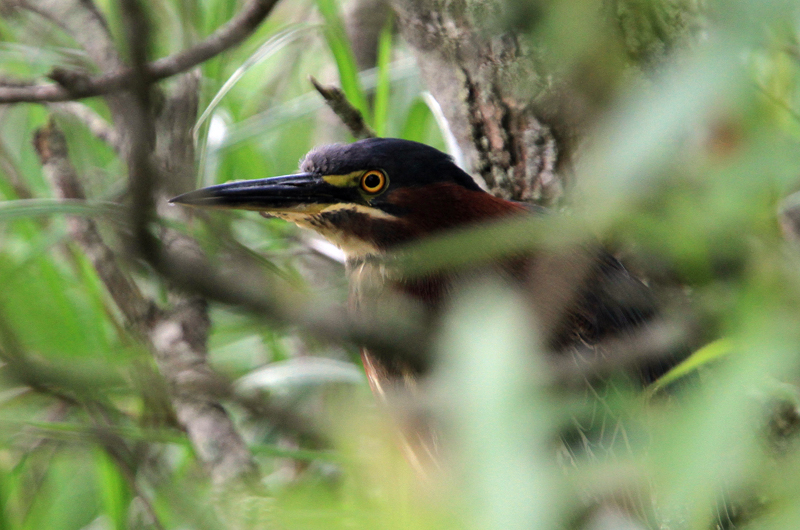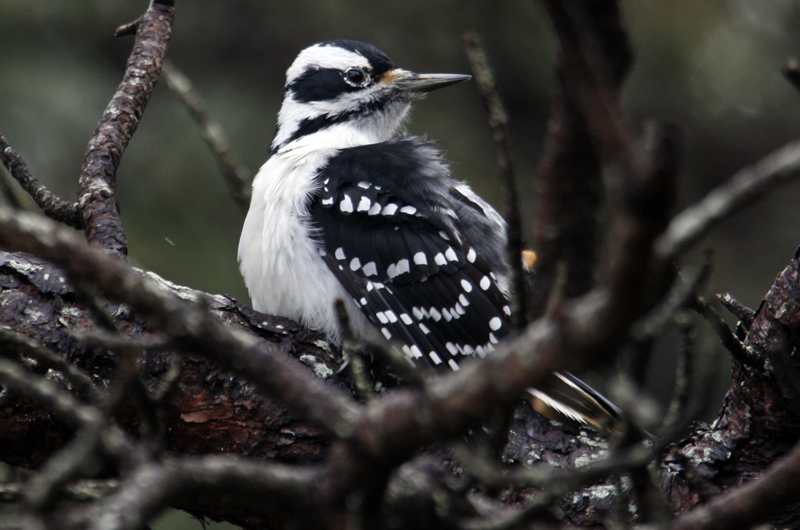Fledglings are abundant now, and will be for the next month. They may or may not be with their parents. But most juveniles resemble their parents, which simplifies their identification.
They may look a little unkempt, with little bits of down showing through their feathers. Some of their outer body feathers may be absent or only partially grown, exposing the downy feathers underneath. And they may appear to be short-tailed as tail feathers are often the last to grow.
Most juveniles are full grown by the time they leave their nest. They may even be larger than their parents since they will lose weight as they learn to feed themselves. And they may be rather noisy while they are learning to catch their own food. Begging to be fed may be accompanied by fluttering their wings.
Of course there are juveniles that do not resemble their parents. It is fairly simple to identify juvenile robins since fledglings differ by having a pale spotted breast rather than the solid brick red of the adults. More confusing are the streaked brown and white juvenile eastern towhees, which look nothing like their parents. Horned lark juveniles are also rather different from their parents. Both of these species resemble sparrows but they are not sparrows. We will not identify them unless we recognize that they do not have the heavy conical sparrow bill.
Lest you think that these differences are confined to songbirds, consider the gulls. Adults can be difficult enough to identify to species, but juvenile gulls are generally dark plumaged, very different from the adults.
Bird Sightings
Sarah Mayhew was startled to find a bob-white perched in a pine tree near Panhandle Road on June 19. What was this ground dweller doing in a tree? Karen Mead reports three bobwhite from a new location — along Moshup Trail near the Aquinnah parking lot.
On June 18, Steve and Happy Spongberg walked the Land Bank’s Short Cove Trail and found a green heron along the shores of Tisbury Great Pond. They also reported mute swan, Canada geese with teenagers, tree swallows, yellowthroats and eastern towhees.
That same day, Karen Mead reported a lot of great crested flycatchers and a ruby-throated hummingbird in Aquinnah. Along the water she found two piping plovers and seven common terns.
Sarah Stock also observed a great crested flycatcher perched on a tomato cage by her garden. Maybe her garden will be free of insect pests.
Cedar waxwings have become more conspicuous recently. Peter and Jacob Kramer found about two dozen of them at Quansoo Woods on June 13. And I have seen or heard numerous individuals in varied locales down-Island.
There must be something about cars that are of interest to birds. Last week a prairie warbler was spotted perched on a car, and this week a rock pigeon was perched on the roof of a car in downtown Edgartown. One ruddy turnstone highlighted my Saturday morning guided birding tour on June 17. This individual was not in breeding plumage. It is both too late to reach its breeding grounds in the Arctic and too early for it to be returning. The tour also spotted the first ring-billed gull of the season. They are here most months except for the breeding season. The website ebird shows that many ring-bills showed up in the Cape and Islands area in the past week, likely due to post-breeding dispersal after unsuccessful nesting attempts in their distant breeding colonies.
Finally, I found a hairy woodpecker’s nest at Cedar Tree Neck on June 18. The nestlings were making loud and continuous cheeping sounds, too noisy to be in anything but a cavity not accessible to jays or other avian predators. I found a likely cavity in a dead oak, and after about 10 minutes of waiting, the female woodpecker showed up with a beakful of caterpillars. The cheeping resumed immediately after the feeding.
Now the breeding season is in full swing. Please keep us up-to-date by reporting your sightings to birds@mvgazette.com.
Robert Culbert leads Saturday morning guided birding tours and is an ecological consultant living in Vineyard Haven.
Photos of recent bird sightings on Martha's Vineyard and more photos of baby birds.










Comments
Comment policy »